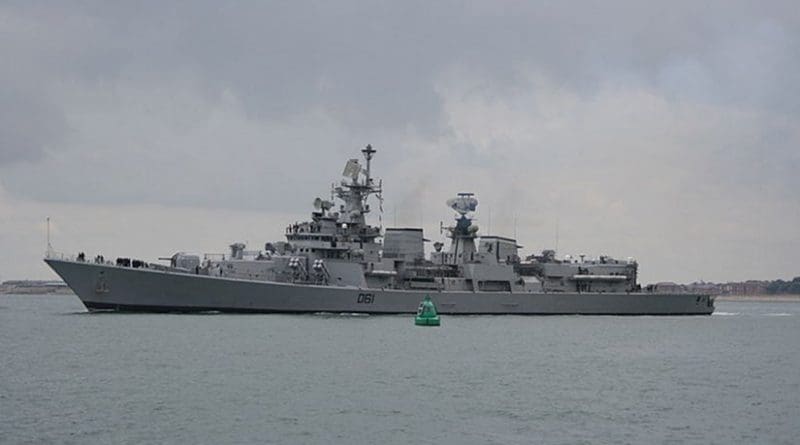India: Defence Budget In An Age Of Scarcity – Analysis
By IPCS
By Bhartendu Kumar Singh*
While defence budget allocation makes the news every year, this year the ubiquitous hypothesis in all strategic comments and opinion articles has been about ‘the marginal allocation being inimical to the India’s defence preparedness’. Critics, however, fail to understand that the defence budget is by and large a reasonably fair deal and probably the best in the current fiscal environment.
Defence budget cuts have been quite common these days. As per available SIPRI estimates, global military expenditure decreased for the third consecutive year after peaking in 2011. The US defence budget has come down from US$691 billion in 2010 to US$585 in 2016. Russia has announced a cut of 5 per cent to its 2016 defence budget. In June 2015, Britain announced a 1.5 per cent cut in its defence budget. Even China, which ha- witnessed a consistent double-digit growth during the last two decades, had a modest single-digit growth this year.
Though India has been performing well in the hitherto sluggish economic environment, its defence budget is subject to certain macro pulls and pressures. While the members of the Departmentally Related Standing Committee of the Parliament (DARC) have been recommending at least 3 per cent of the GDP in their several recommendations over the years, the 13th Finance Commission adopted a broader perspective of security and, therefore, recommended capping the defence budget at 1.76 per cent of the GDP so as to balance development along with defence. Successive budgets have worked hard to come to this benchmark. Given this tight fiscal situation where the budgetary resources are not going to come in liberal doles in future as well, there is no alternative but to explore ways and means beyond the defence budget.
An immediate area for action is prudent expenditure management since revenue expenditure accounts for a major share of the armed forces, particularly in the Army that is manpower-intensive. While the Government notified the constitution of an Expenditure Management Commission in September 2014, defence expenditure was kept out of its purview despite the fact that defence accounts for more than 12 percent of Central Government expenditure. From a public policy perspective, vital penny need to be saved by scrutinising certain non-core services in the defence forces and see if they can be done by shifting them to civil side. The Accounts Branch of the Indian Air Force, for example, has 492 commissioned officers and 7,000 men catering to the pay matters of 1,60,000 officers and men in the Air Force. On a competitive note, the same can be provided by 300 people on the civilian side very easily.
The Meteorology Branch of the Indian Air Force with 300 officers is equally unwieldy and needs pruning. Similarly, the rationale of putting a large section of Army officers in managing various functionalities in Army Service Corps needs reconsideration since many of these services can be provided by the market at a competitive cost without affecting defence preparedness. These are just representative examples that if properly explored, can go a long way in reducing the extra manpower and salary bill that is about to touch INR one lakh crore this year. The services must, as the honourable Defence Minister has rightly pointed out, do this as an in-house exercise and come out with a blue-print since India is the only country that has not been talking of manpower reduction while driving its military modernisation process.
Another area that deserves serious consideration is internal resource generation. China experimented with it rather successfully in the Eighties and Nineties when the budgetary allocations to the PLA remained stagnant for over a decade under the ‘four modernisations’ programme. Many countries including the US and UK are resorting to internal resource generation due to a frozen defence budget. India should not hesitate in exploring the vast potential in defence resource management. Defence land, for example, can be gainfully utilised wherever they can be leased out. The shopping complexes, marriage halls, clubs and banking facilities set up including ATMs are cash cows that need to be leveraged commercially. Presently, the revenue generated from these entities is going to the regimental funds of the services. The adoption of a roadmap for gradual conversion to accrual accounting by the Government makes it relatively easier for the defence forces to identify their assets and put them to commercial use wherever possible.
In recent times, there has been a renewed emphasis on development and broadening the concept of security from mere military to human security. Inclusive growth has been the buzzword in the Indian development discourse as well and credit must go to the successive governments in giving a combined push to the defence and development agenda. The emphasis on the ‘make in India’ campaign should be seen in this light where the domestic military-industrial complex is being encouraged through a new defence production policy and FDI enhancement. The idea is to save the penny on foreign exchange since India imports 70 per cent of its weaponry.
While more money is always welcome, critics of the defence budget need to empathise with the developmental priorities or the broader aspects of security. There is, therefore, no alternative to reducing the extra flab and generating internal resources for bridging the resource gap set up by the defence budget.
Views are the author’s own.
* Bhartendu Kumar Singh
Indian Defence Accounts Service

